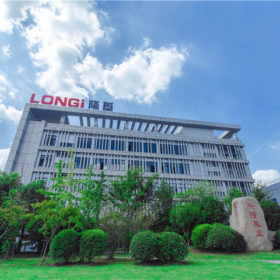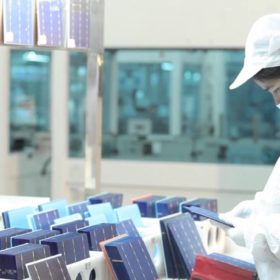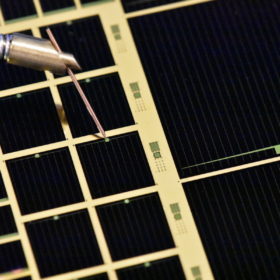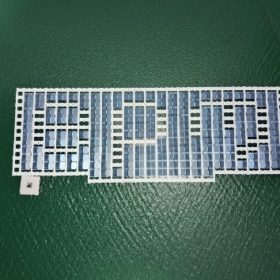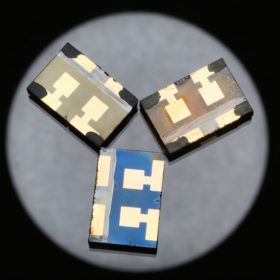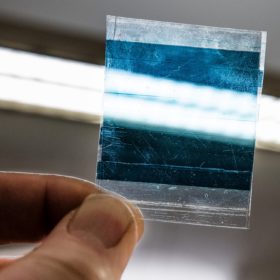Longi half cut PERC module exceeds 360 W
Longi is progressing at breakneck speed, having announced yet another world record. This time, the Chinese manufacturer says its 120-cell half-cut monocrystalline PERC module has exceeded 360 W.
European researchers discover new effect of light on perovskites
Scientists led by Germany’s Max Planck Institute for Solid State Research have demonstrated for the first time that, as well as electrons, light also releases charged particles in a perovskite solar cell material. The researchers state that this groundbreaking discovery could make possible new solar power applications, such as batteries directly charged by light.
UK researcher’s discovery could push PV into shape
A team of scientists at Warwick University in the U.K. has discovered a method for altering the structure of a semiconductor at the nano level which, it says, could push cell efficiencies of several materials beyond their theoretical limits.
Webinar Q&A: Reaching higher standards with cell and module innovation
The next generation of solar PV modules will see different technologies combined at both the cell and module level. That was the main conclusion of a recent pv magazine webinar, powered by JinkoSolar. Overall, a great deal of interest from participants was generated. Here, Andrea Viaro, Head of Technical Service Europe for JinkoSolar, responds to their questions.
Microlink Devices hits 37.75% efficiency for triple junction cell
U.S. technology company Microlink Devices has achieved a record efficiency of 37.75% on its triple junction thin film cells. The lightweight cell achieves a power density of more than 3000 W/kg, and is designed for use in satellites and unmanned air vehicles (UAVs). The new efficiency record is confirmed by the National Renewable Energy Laboratory.
Colombia to host its first floating PV project
The floating solar array will be deployed at the water reservoir of Peñol-Guatapé, which is owned and operated by local energy and telecommunications utility, Empresas Públicas de Medellín (EPM).
EU grants €5 million to perovskite research consortium
Belgian institute Imec will be the coordinator of a project involving many of Europe’s leading research organizations, which will focus on developing stable, scalable, low cost PV modules based on perovskite technology. The project, named ‘ESPResSo’ has received more than €5 million in funding from the European Union.
Fraunhofer ISE, Schmid develop production line concept for custom design modules
German research institute, the Fraunhofer Institute for Solar Energy Systems (ISE) and equipment supplier, Schmid have jointly developed a production line for customizable modules for building-integrated projects. According to Fraunhofer ISE, the concepts developed by joint study could reduce the production cost for BIPV modules as much as 35%.
Swedish scientists develop new method to reduce defects in organic solar cells
The researchers found that printed solar cells achieved a better performance when they used an active polymer material as glue.
Lithium-ion battery prices could rise as cost of cobalt shoots up, warn analysts
Price of cobalt, a raw material used in lithium-ion batteries, rose 26% in the first quarter of the year, following 114% annual increase in 2017, finds EnergyTrend. Suppliers may look at ways to lower cobalt content in new iterations, experts say.
